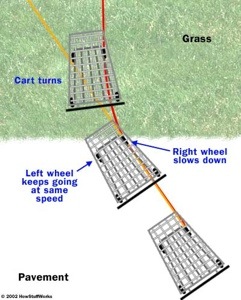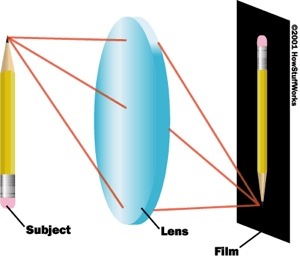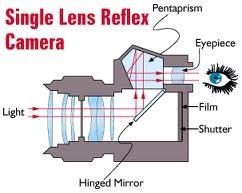How a Camera Works:
Photography is by far one of the most important inventions in history. It has allowed us to see many different things that are many miles, even years, apart from us. Cameras allow us to capture moments in time and preserve them for thousands of years to come.
The basic technology that makes all of this possible is quite simple. A still film camera consists of 3 basic elements: a chemical element (the film), an optical element (the lens), and a mechanical element (the camera body itself).
The optical component of the camera is the camera lens. The lens is simply just a curved piece of glass or plastic. Its job is to take the beams of light that are bouncing off of an object and redirect them so that they will come together to form a real image – an image that looks like the scene in front of the camera lens.
How does it do this? It is very simple. The light travels speed as it moves from one medium to another. Light travels slower through glass than it does through the air, therefore, the lens will slow it down.
One part of a light wave will reach the glass before the other when these waves enter a piece of glass at an angle, making it slow down first. This is similar to pushing a trolley from the pavement onto the grass at an angle. The right wheel will hit the grass first which makes it slow down while the left wheel is still on the pavement. Because the left wheel was briefly turning faster than the right wheel, the trolley turned right as it moved onto the grass.
The effect on light is the same – as it enters the glass at an angle, it bends in one direction. When it exits the glass it bends again as the parts of the light wave enter the air before the other parts of the wave and speed up. In a regular converging or convex lens, one or both sides of the glass curve out, meaning the rays will bend towards the centre of the lens when it enters. In a double convex lens, such as a magnifying glass, the light rays will bend on entry and exit.
This will effectively reverse the light’s path from the object. A light source, example a candle, will emit light in all directions. These rays of light all start from the same point – the candles flame – which are then constantly diverging. A converging lens will take these rays and redirect them to all converge back to one point. At the point where the rays converge, you will get the real image of the candle.
If you would like to find out more information about the specific parts of a camera, an interesting site to go to is: http://electronics.howstuffworks.com/camera1.htm
By Chris Stevenson



